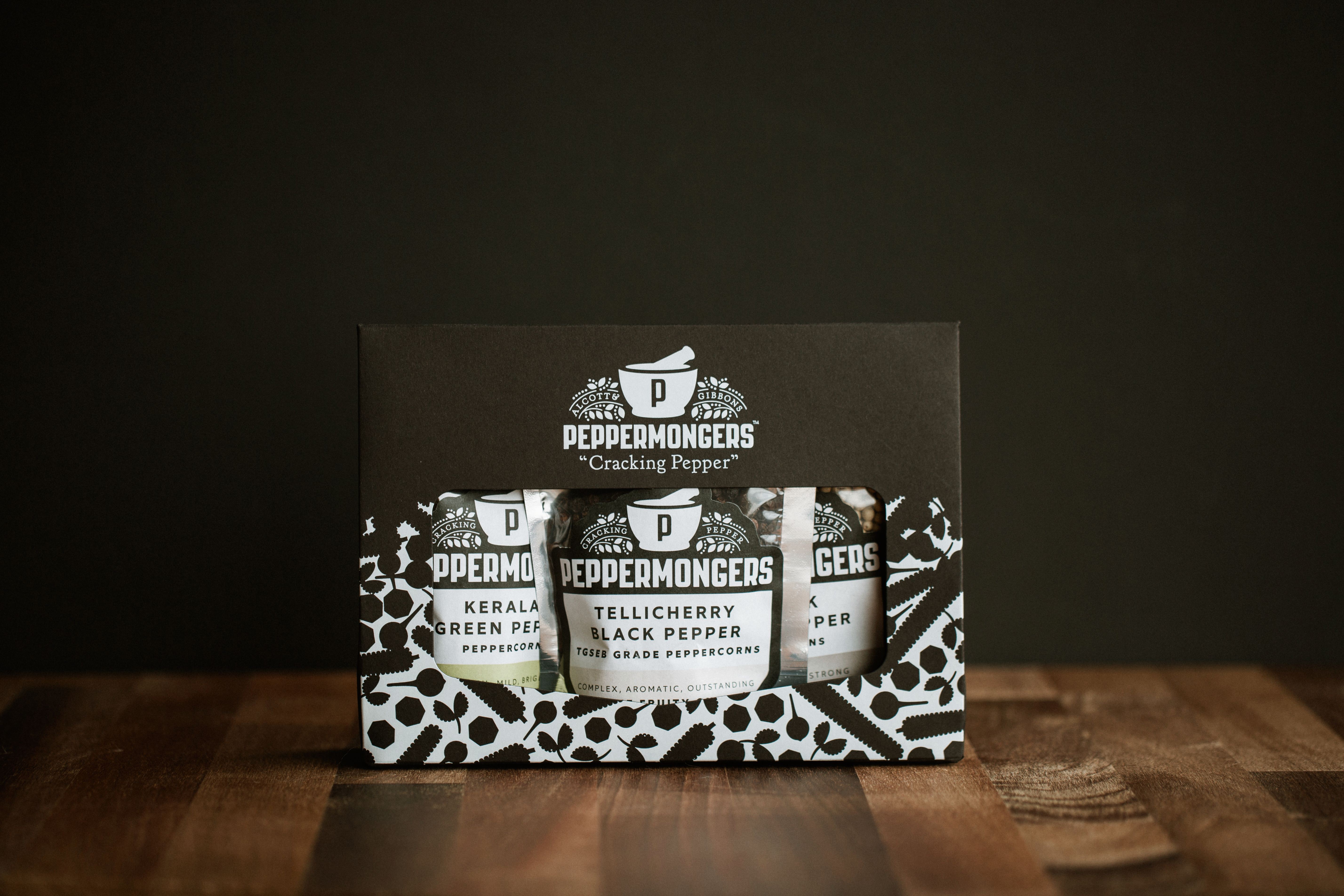
Posted by / December 28th 2020
Black Gold: The Glorious History of Pepper
It’s fair to say we’re all familiar with Himalayan salt at Salhouse & Peppermonger’s: we’ve got recipes for every occasion, we’ve examined its chemical constituents, and we’ve even explored its geological origins. But what about salt’s companion on the dinner table: black pepper?
We stock dozens of varieties of black pepper, each promising to accent your food in subtle and not-so-subtle ways. With so many flavours and potential food combinations to contemplate and discover, it can be easy to overlook black pepper’s origin story: where it came from - and how it emerged, over centuries, to be a staple food for almost every culture on Earth…
Ancient Times
Black pepper, or Piper nigrum to use its Latin nomenclature, is a flowering vine native to Southern Asia, the fruit of which, when dried, can be used as the seasoning we know and love. Records of black pepper being used in Indian cooking date back to at least 2000 BC but its popularity spread across the region to the point that it was traded widely across Asia, and even served as currency in some locales. In fact, black pepper was so coveted in the Ancient World that it was known by merchants as “black gold”.
The global popularity of pepper followed the rise of the Roman Empire. The Romans brought pepper from the East to the western shores of continental Europe to use as an exotic, if expensive, spice. Romans used it in their food in the same way that we do and the famous Roman cookbook, Apicius’ De re coquinaria featured pepper in the majority of its recipes. As western civilizations discovered pepper, it retained its historic value and was considered a luxurious addition to the dinner table - so much so that it was even demanded as part of the Visigoths’ ransom when they besieged Rome in the 5th century AD.
The Middle Ages
From the 6th century onwards, after the fall of Rome, the global pepper trade was taken over by Arabic powers who controlled ports across the Middle East. In Europe, the pepper trade was largely an Italian affair and Italian merchants supplied the rest of the world with the spice into the 15th and 16th centuries. Pepper became such an expensive culinary resource that it effectively funded the rise of city-states such as Venice and Genoa.
With the rise of competing empires and the emergence of global naval powers like Portugal and Britain, trade routes multiplied across Europe and the world and the pepper supply became more plentiful, increasing common usage of the spice and driving down its price.
Where black pepper had once been the exclusive seasoning of kings, queens and emperors, it now began to find its way onto the dinner tables of the common man.
Pepper in the Modern World
Today, pepper accounts for 20% of the global spice trade. While India remains one of the largest producers of pepper, the top spot has been taken by Vietnam which produces an estimated 273,000 tonnes every year and exports 142,000 tonnes to other countries across the world. The global pepper market is worth an estimated $4.1 billion - accounting for the 750,000 tonnes of the spice that are produced every year.
Next time you’re sitting down to sprinkle pepper on your favourite food, take another look at the little black seeds. While your pepper grinder might not capture the nuances of its glorious past, it's worth remembering the journey the humble peppercorn has taken to make it to your plate, and the role it played in shaping the modern world.
